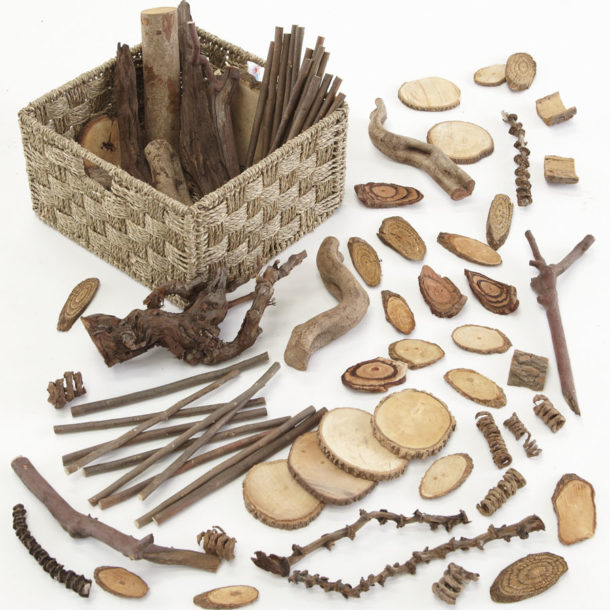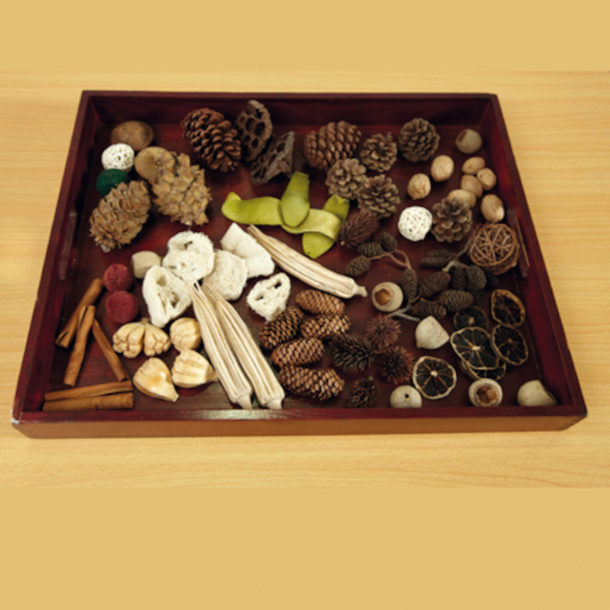Natural and open-ended resources provide a vast range of opportunities; they can be used by children in their original state, or imagined into something else. The use of natural resources allows children to experience what they are and what they could possibly be used for.

In this article, the team at TTS alongside Akira Morgan and Elizabeth Boffey who run an Early Years Consultancy, discuss eradicating the old plastic fantastic way of learning and encourage more natural, open-ended resources and loose parts.
The way natural resources look, feel, smell and taste all provide children with great learning opportunities whilst also ensuring they are getting a better understanding of those objects. Plastic representations do not give anything like the same possibilities. If a child’s only experience is of a plastic lemon, when will they find out that actually, lemons are sour? That they are white underneath the yellow skin? That they are segmented? Providing a child with the real thing is a great way to help find those ‘teachable moments’and support their understanding of the natural world.
We have also found that using a variety of wooden objects, such as wooden blocks, can provide children with a more ‘open-ended’ experience because the resources can be anything. They allow children to be creative and express themselves freely through their play; they are not restricted by the pre-set limitations of objects or plastic representations of items. For example, wooden blocks can be used to build a rocket, a car, a plane, a building or even abridge. A child in one of our previous settings created a race track for his cars and mini wooden vehicles. To make his masterpiece he used a variety of materials and loose parts. He wanted to create something from one side of the room to the other. Using planks of wood, bricks and Metal Water Channel Stands,he was able to create something that was sturdy and built for purpose. He was very proud of himself! Using resources in this way means that children can truly get the most out of them and are able to use their own imaginations.

Another great way to use natural resources is to create treasure baskets for exploratory and sensory play. One of the reasons for creating treasure baskets using natural materials is that they provide a variety of different textures for babies and children to experience, unlike plastic resources which are usually smooth in feel.
We have seen a huge array of settings during our early years careers and one thing we would both say is that resources and materials can beset up with the potential to draw children in, make them want to stay a while,explore a little (or a lot), try new things, create and wonder. On the flip side they also have the potential to completely turn children away. In an environment that advocates open-ended resources and loose parts, the materials are carefully selected for their potential to enhance learning and discovery and encourage children to lead in this. Many open-ended resources, although seeming very little on their own, actually come to life when a child picks them up and begins to interact.
Another fantastic natural resource is mud! From mud, children in the mud kitchen may create mud pies, runny chocolate and chocolate cakes. As they produce their concoctions, they are making scientific discoveries;combining thick mud with running water and noticing how the consistency changes. They are learning about the texture and how the mud feels through the different stages. With the support of a practitioner, they will create and develop knowledge and vocabulary surrounding this. They are learning about mathematics as they combine three cups of water with two small bowls of mud into one big bucket… The possibilities are endless with such an open-ended resource.
What are the professionals saying?
We asked some early years professionals how they felt about natural resources and the advantages of open-ended play… Here is what they had to say:
Manager 1: “Endless possibilities… Texture. Shape. Creativity. For example, a cardboard box…”
Manager 2: “I recently removed or replaced all plastic toys in my setting. I have mostly open-ended and natural resources both inside and out. I believe this helps support children’s imaginative play and language development.”
Manager 3: “I have a metal basket of objects that a child goes to and combines objects and creates sounds.”
In a world of commercial, plastic, noisy toys, we need to ensure that children are experiencing natural, open-ended resources and loose parts.Let’s face it, how many of us have bought a child a toy for their birthday or Christmas and rather than showing any interest in the present, they play with the box instead!
